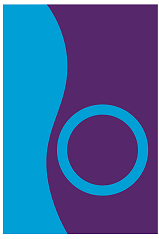The relationship between the swayback posture and chronic shoulder problems.
By Quentin Shaw
Published by British Institute of Osteopathy
During the time of my osteopathic education with the late Mr John Wernham, he stated that “All shoulder problems are Swaybacks” provided there is no infection or trauma to the affected joint. I have seen hundreds of cases of chronic shoulder problems where no direct cause is known and the shoulder joint becomes restricted in movement and painful in normal activity. This clinical scenario develops from a neuromusculo-mechanical postural habit that is imposed on the patient by themselves which Classical Osteopaths call a Swayback. How to identify a Swayback -the problem is one that involves the entire body mechanics and muscular control and balance of the shoulders.
- The shoulder girdle is braced back or retracted in an attempt to straighten the upper body and appear more upstanding rather than kyphosed and collapsed in demeanour.
- What you will notice about the patient when examining them in the standing position, is the body continually swaying due to the disturbed body balance and the body’s attempt to restore the equilibrium from the ground up.
- You note the feet are set apart in an attempt to provide more support and stability for the weak pelvic and spinal mechanics.
- There is a forward tilt of the pelvis; the sacrum becomes exaggerated in a nutated direction by way of compensation, ie., in a normal pelvic condition and a horizontal line is drawn from the base of the sacrum to the symphysis pubis it should be about 30′, in the Swayback posture this angle rises to 40′ and causes widespread spinal lesioning consisting of a series of short lateral curves which are powerfully united by the overlying muscles.
- The upper and lower halves of the dorsal arch no longer function as a unit; each half functioning on its own, closer examination will elicit the information that the upper half of the dorsal column is broken into two sections, centring at 4-5D. The upper dorsal curve is also flattened in extension with associated restrictions of movement; this is caused by the backward movement of the shoulder girdle which destroys the normal relation between the posterior and anterior spinal curves.
- The chest is often held in a state of chronic expansion and considerably rigid. The sternum will also have moved to a position up to 45′ from the near vertical in the norm.The most obvious change in the body mechanics is to be found in the role of the clavicle which in the norm act in compression on the rib cage and as a prop to keep the shoulders away from the chest but in the Swayback posture the clavicles become tension and suspended members, with an effect on the soft tissue attachments. From the effect of the scapula being braced back the humeral heads internally rotate in an attempt to restore equilibrium, you will usually find the humeral head ‘riding high’ on the painful side. The soft tissue attachments on and around the shoulder becomes actively antagonistic and strained in their resting tone. Finally the neck is often tilted or slipped forward on the cervicodorsal junction again as an attempt to restore equilibrium.
Treatment
In the treatment of the shoulder we must remember that the acute stage is usually superimposed on the chronic underlying condition which means that local work to the joint must be palliative only as any attempt to gain the full range of movement will only result in failure. The first essential is to instruct the patient that the pain and limitation of movement in the shoulder is due to the strained posture and the instruction must be repeated with every treatment until the patient understands and is prepared to abandon hyper-extension and to employ hyper-flexion as an exercise until the muscular attachments are sufficiently released and the ‘easy normal’ position established. Clinically the principle of the whole treatment process is pure integration and if it is true that you cannot adjust the abnormal to the normal, then the troublesome shoulder is the classic example. Classical Osteopaths begin the treatment by addressing the pelvic base-line. This solid foundation is often in torsional stress by reaction to the backward movement of the upper girdle and the destruction of the normal relations between the posterior and anterior spinal curves. As the treatment proceeds the muscular tensions must receive the most careful attention avoiding any kind of stimulatory movement and dealing with the skeletal articulations with slow rhythmicity and encouragement. Raise and release the clavicle by means of arm leverage and care must be taken to protect the scapula in all direct treatment to the shoulder. Restore skeletal alignment particularly the lateral deviations of the spine and encourage the anterior and posterior continuity of the spinal arches. Finally postural instruction must be repeated again and again and checked with every treatment so that the postural cause can be rooted out and the condition dealt with in a proper and permanent way.

